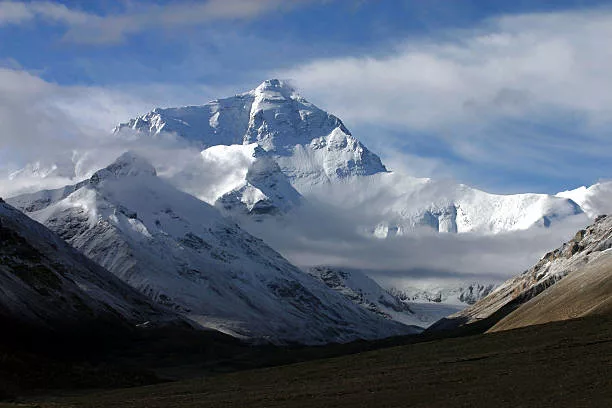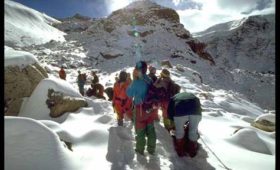The Everest Base Camp trek, a pilgrimage for adventure seekers, promises breathtaking vistas and a profound connection with the world’s highest peak. But to truly experience its grandeur, timing is everything. Choosing the “best season for Everest Base Camp trek” is crucial for a safe, enjoyable, and unforgettable journey. This comprehensive guide will illuminate the optimal times to embark on this iconic Himalayan adventure.
Understanding Everest’s Climate:
The Everest region’s climate is characterized by extreme variations, influenced by the monsoon and high altitude. To plan your trek effectively, it’s essential to understand the distinct seasons:
- Spring (March to May): This is considered one of the prime trekking seasons, offering stable weather, clear skies, and blooming rhododendron forests.
- Summer/Monsoon (June to August): Heavy rainfall, cloudy skies, and potential landslides make this season unsuitable for trekking.
- Autumn (September to November): Another excellent trekking season, boasting clear skies, mild temperatures, and post-monsoon freshness.
- Winter (December to February): Extremely cold temperatures, heavy snowfall, and potential trail closures make winter trekking challenging and less popular.
The Golden Windows: Optimal Trekking Seasons:
- Spring (March to May): A Symphony of Color and Clarity:
- Why Spring?
- Stable Weather: Experience relatively consistent weather patterns, minimizing the risk of disruptions.
- Clear Skies: Enjoy unobstructed views of Everest and surrounding peaks.
- Blooming Rhododendrons: Witness the vibrant spectacle of rhododendron forests in full bloom.
- Moderate Temperatures: Experience comfortable daytime temperatures and gradually warming nights.
- Longer Days: Maximize your trekking time with longer daylight hours.
- Considerations:
- Spring is a popular season, so expect more trekkers on the trails.
- Book accommodations and flights in advance.
- Why Spring?
- Autumn (September to November): Post-Monsoon Perfection:
- Why Autumn?
- Clear Skies: Enjoy crisp, clear skies and exceptional visibility.
- Mild Temperatures: Experience comfortable daytime temperatures and cool nights.
- Post-Monsoon Freshness: Enjoy the refreshed landscape after the monsoon season.
- Stable Weather: Experience relatively stable weather patterns with minimal rainfall.
- Considerations:
- Autumn is also a popular season, so expect more trekkers on the trails.
- Book accommodations and flights in advance.
- Why Autumn?
Why Avoid the Monsoon and Winter:
- Monsoon (June to August):
- Heavy rainfall makes trails slippery and dangerous.
- Cloudy skies obscure mountain views.
- Potential for landslides and trail closures.
- Leeches are prevalent.
- Winter (December to February):
- Extremely cold temperatures make trekking challenging.
- Heavy snowfall can lead to trail closures.
- Limited daylight hours.
- Risk of frostbite and hypothermia.
Planning Your Everest Base Camp Trek:
- Book with a Reputable Agency: Choose a trekking agency with experienced guides and a commitment to safety.
- Acclimatization: Plan your itinerary with ample time for acclimatization to prevent altitude sickness.
- Pack Appropriately: Pack layers of warm clothing, sturdy hiking boots, and essential gear.
- Permits: Obtain the necessary trekking permits, including the TIMS card and Sagarmatha National Park entry permit.
- Flights: Book flights to Lukla well in advance, as they can fill up quickly during peak seasons.
Essential Tips for Your Trek:
- Stay Hydrated: Drink plenty of water to avoid dehydration.
- Eat Well: Maintain a balanced diet to provide your body with the necessary energy.
- Respect Local Culture: Dress modestly and be mindful of local customs.
- Leave No Trace: Pack out your trash and minimize your environmental impact.
- Enjoy the Journey: Savor the breathtaking scenery and cultural experiences.




